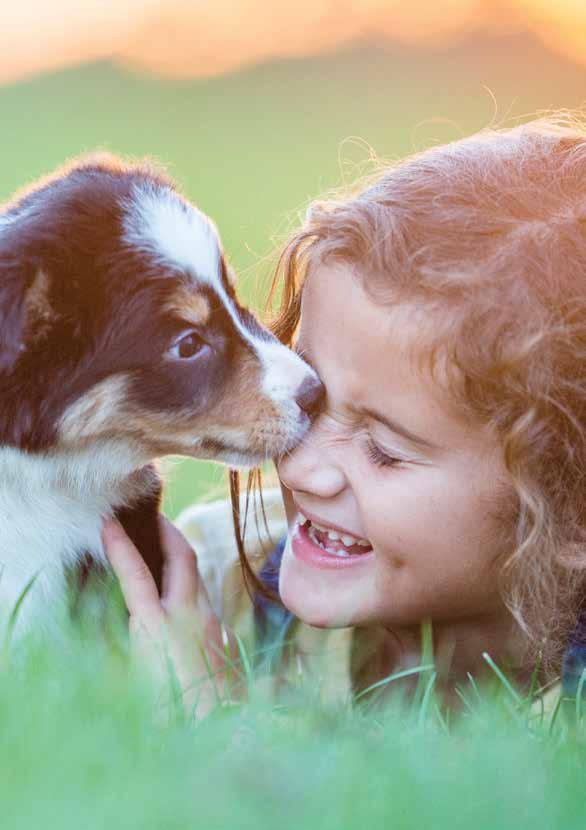
2 minute read
Kids and Dogs
Growing up with a dog can be a wonderful life experience, and watching kids and dogs play together is heart-warming. However, it’s important to take extra steps to ensure both your child and dog remain safe. It’s important to supervise your dog and child carefully. When supervising, ensure you know the signs of stress or fear in your dog to prevent misunderstandings from occurring. Supervision in itself is not enough, unless you also know what you’re looking for and how to react appropriately. If you’re unsure, contact a qualified Force Free trainer to discuss the dynamics of child and dog interactions with the whole family.
Teach your dog and child to share their environment safely and appropriately by: • Teaching your dog appropriate, calm behaviours around children.
• Teaching your child appropriate ways to interact safely with the dog. • Allowing your dog peace and quiet in another room or regular breaks from play. • Ensuring your child knows to leave your dog alone if he takes himself away from play. • Keeping kids and dogs separate during
‘mad’ moments (or other highly exciting situations). • Helping your child to learn to recognise the signs of stress in your dog and teach them how to respond appropriately (ie. provide more space, and/or calm down). • Ensuring your child doesn’t climb over, bounce on, poke or pull the dog in any way.
Other important rules: • Never tease a dog, pull its tail or ears • Never let a child discipline a dog (in fact, if you feel your dog needs to learn better manners, best to contact a qualified force free trainer. See ‘Training’ for more information). • If you’re being chased by a dog stop and stand perfectly still (stop your bike or skateboard if using one). • Ensure your dog can’t escape from its yard. • For more information on kids and dogs, check out our website: http://www. charlessturt.sa.gov.au/dogs
If approaching a dog, teach your child to: • Ask permission of the owner before approaching a new dog • Ask permission of the dog by stopping a few metres away and inviting the dog to approach instead - if the dog wants the interaction they will come to you • If the dog approaches, the best spots to pat them gently are under the chin or on the chest (dogs dislike being patted on top of the head). • Never approach a dog (including the family dog) while it is tied up, eating, sleeping, playing by themselves with a toy, in a car or a dog with puppies.








